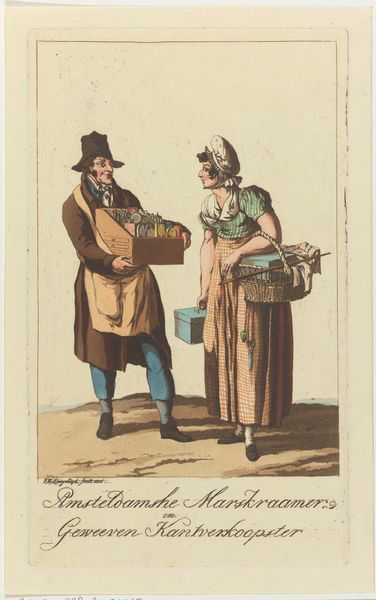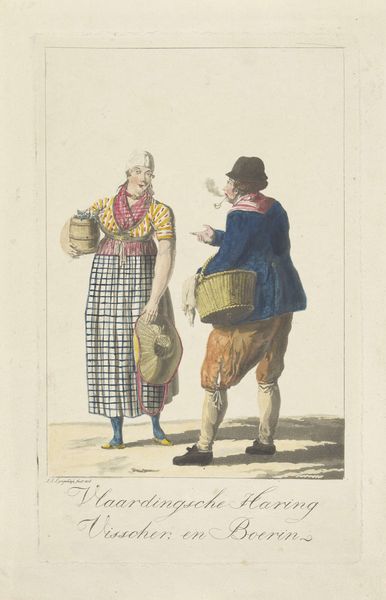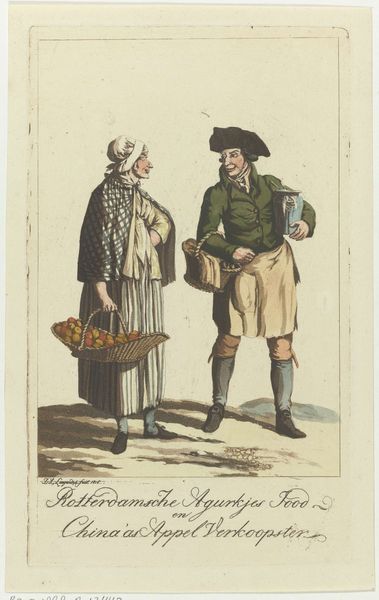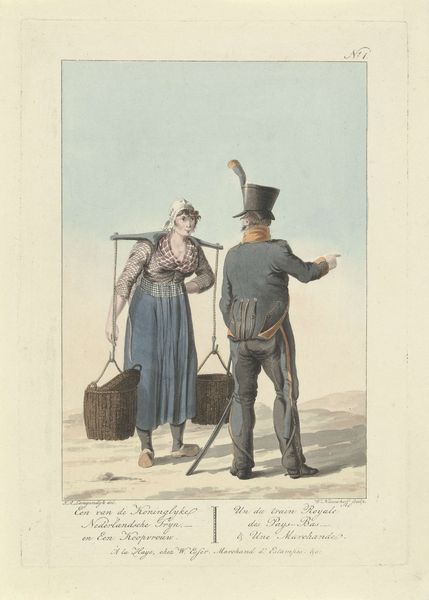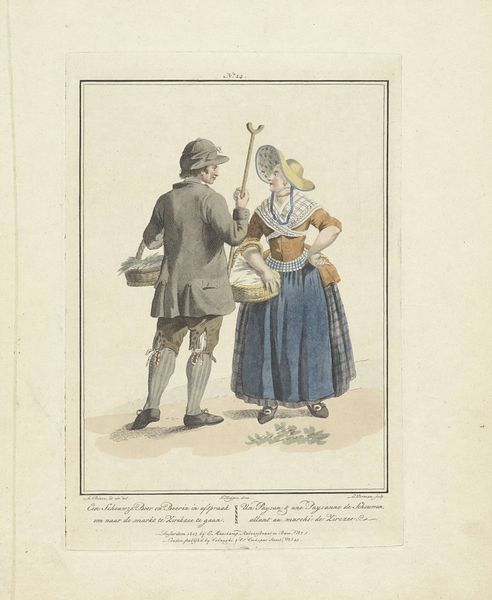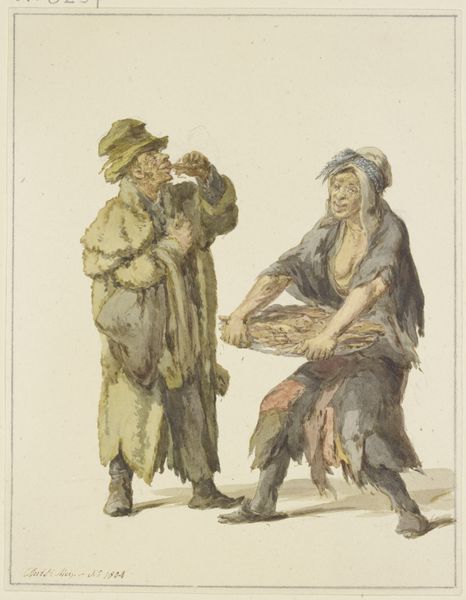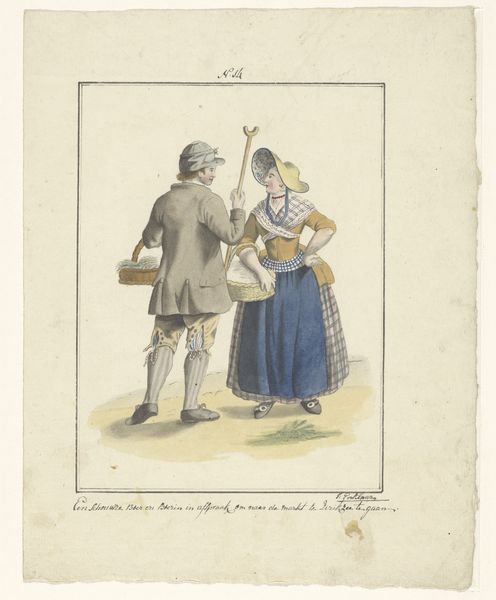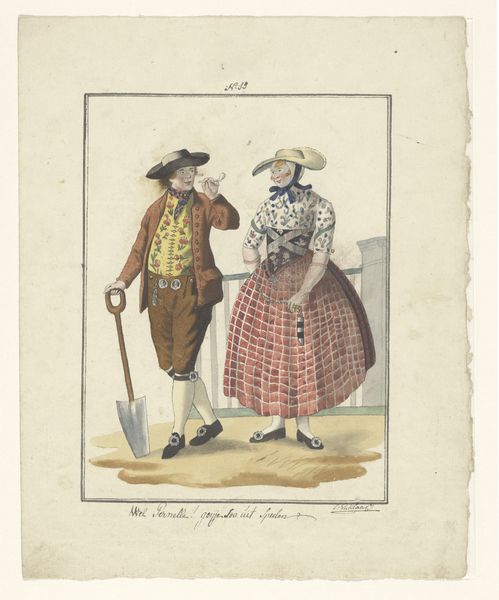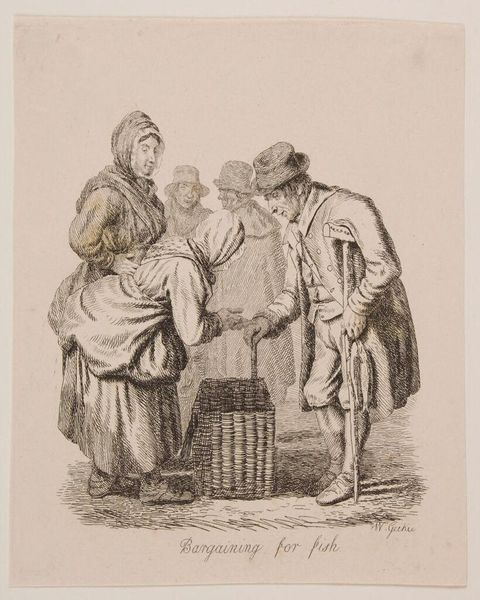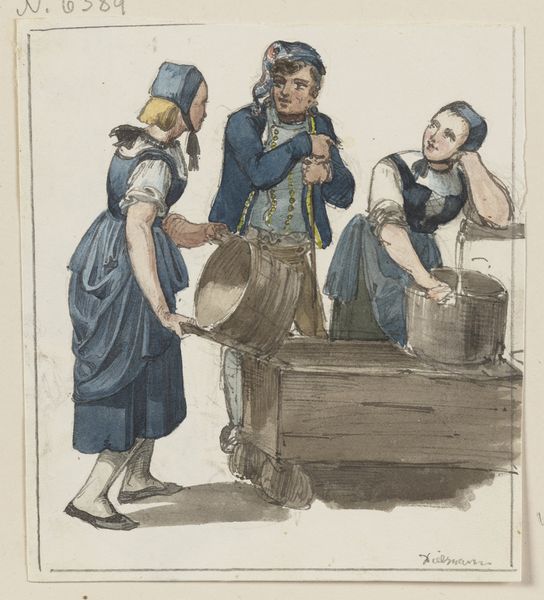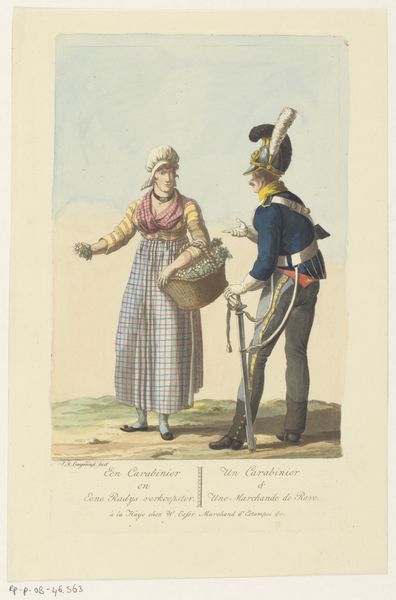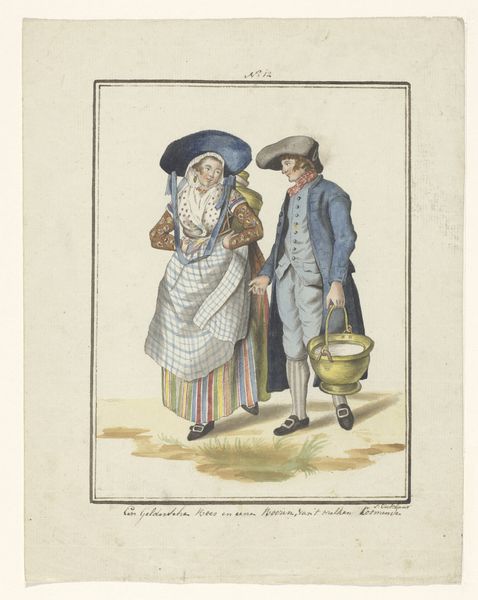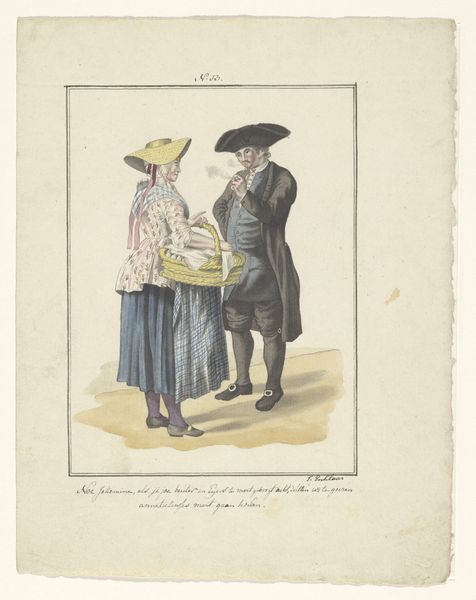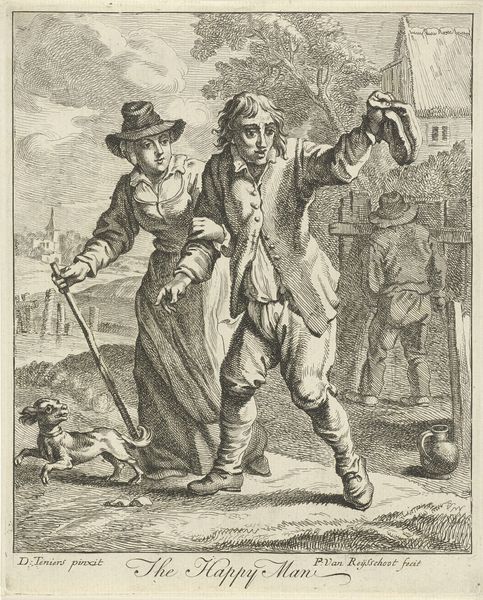
watercolor
#
watercolor
#
historical fashion
#
romanticism
#
19th century
#
watercolour illustration
#
genre-painting
Dimensions: height 222 mm, width 135 mm
Copyright: Rijks Museum: Open Domain
Curator: Here we have "Vlaardingse visserstypen," or "Vlaardingen Fishermen Types," a watercolor made in 1816. It resides here in the Rijksmuseum. Editor: There’s a gentleness to this work; the tones are muted, and the depiction of these two figures feels remarkably tender. Is this the Netherlands? Curator: Yes, the artist is Jan Anthonie Langendijk Dzn. This work is really interesting, particularly its reflection of romanticism in its idealization of the rural figure, and genre painting in its rendering of everyday life. Editor: Interesting that you call it 'idealization.' What I find compelling is the material culture on display: The basket the man carries, seemingly woven, his pipe, and even her wooden pail. How integral would you say those crafted items are? Curator: Massively so. Part of romanticism's wider project was looking to a more innocent, arguably imagined, past. It looked at an uncomplicated present in its stead. This aesthetic movement certainly influenced how art was produced and consumed. Editor: True, and the artist pays so much attention to how things are made – how those clothes must have been sewn and worn, the cooperage on her pail. What story do these items tell about the realities of early 19th-century Dutch labor? Curator: Well, look at the work itself. Its display is at the Rijksmuseum, which suggests the artwork is more of a historical piece with institutional value than of real fisher folk culture. The depiction does capture some essence, and simultaneously abstracts it for higher class viewership. Editor: Fair point. To create the work itself—think of the craft of mixing watercolors, the specific papers used then...even those elements contributed to how these fishing community individuals would be seen through time. Curator: I agree completely! The presentation certainly refines the representation. Thinking of the material conditions allows us to critically analyze the work. Thanks for bringing these layers to my attention! Editor: Always a pleasure to peel back the artistic process with you!
Comments
No comments
Be the first to comment and join the conversation on the ultimate creative platform.
